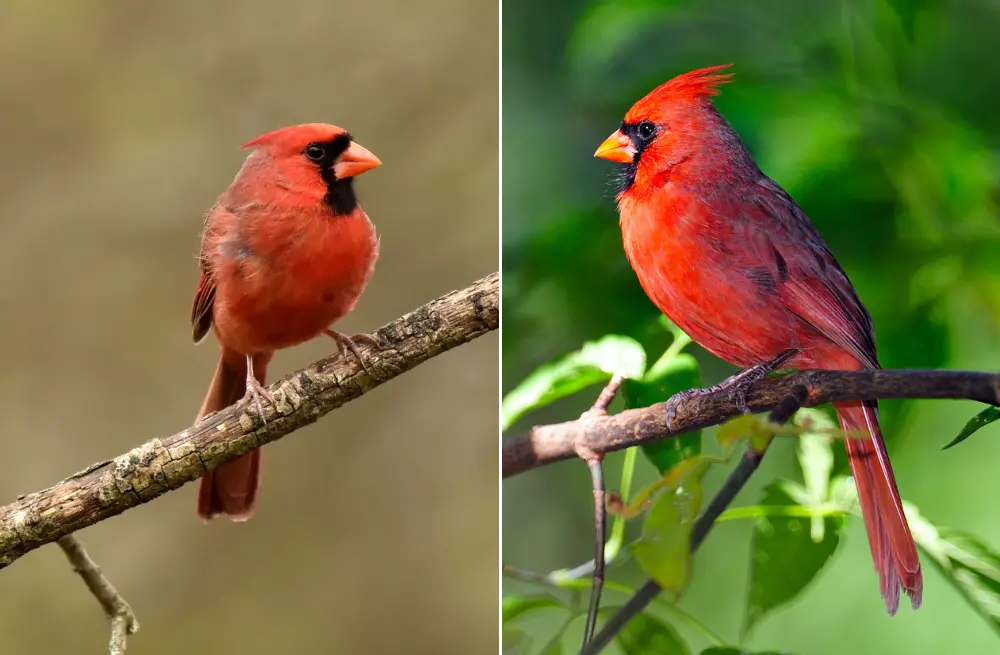Green Birds in Tampa, Florida: A list of 7 Birds species
Tampa, Florida, with its warm climate and rich biodiversity, is a haven for birdwatchers and nature enthusiasts. Among the city’s vast array of bird species, there’s a unique subset that often catches the eye due to their vibrant coloration: green birds.
In this article, we’ll take a journey through the green-hued avians you might encounter in and around Tampa.
You might also like: 19 Green Birds You Can Spot in Florida
7 Green Birds in Tampa
Here’s a list of green birds in Tampa, Florida, complete with descriptions and notable characteristics:
Monk Parakeet (Myiopsitta monachus)
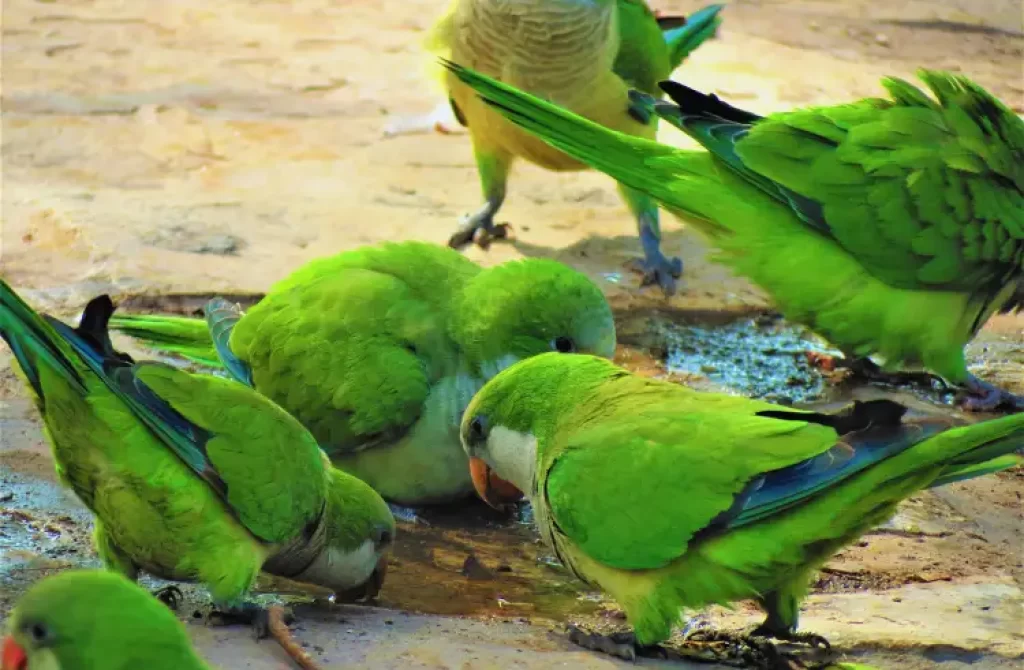
The Monk Parakeet, also known as Myiopsitta monachus, is a colorful bird that you might spot in Tampa. These little guys measure around 11 to 12 inches in length.
They’re easy to identify with their vibrant green feathers and a grayish face and chest. Interestingly, even though they hail from South America, they’ve made themselves right at home in Tampa, forming wild communities.
One of the things that make Monk Parakeets unique is their nest-building skills. They’re famous for creating big nests made of sticks, and you can often see these nests perched high up in trees or even on power lines. It’s quite a sight to behold!
These clever birds have adapted well to their new surroundings, and their chatty and sociable nature makes them a delightful addition to Tampa’s birdlife.
Green Heron (Butorides virescens)
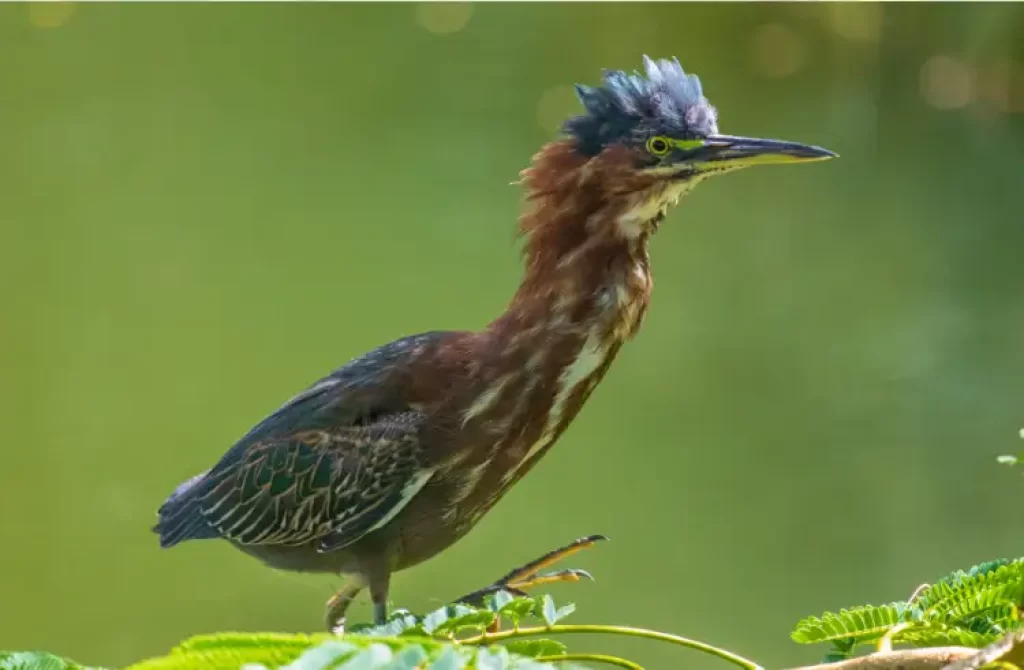
If you’ve ever been around Tampa’s freshwater spots, you might’ve spotted the Green Heron. Standing about 16-22 inches tall, this bird isn’t particularly big, but it sure stands out.
The Green Heron sports a cool greenish-blue back that glistens in the sunlight. But what catches most folks’ eyes is its rich chestnut-colored neck, which makes a lovely contrast.
These herons are quite the patient hunters. They love hanging out near freshwater – think ponds, lakes, or even quiet river spots. What are they doing?
They’re on the lookout for a tasty snack. Fish are their favorite! They’ll stand super still, almost like a statue, waiting for just the right moment to snatch up a fish.
If you get the chance to watch one in action, it’s quite the sight – a mix of patience and precision. It’s no wonder they’re a favorite among nature lovers in Tampa.
White-eyed Vireo (Vireo griseus)
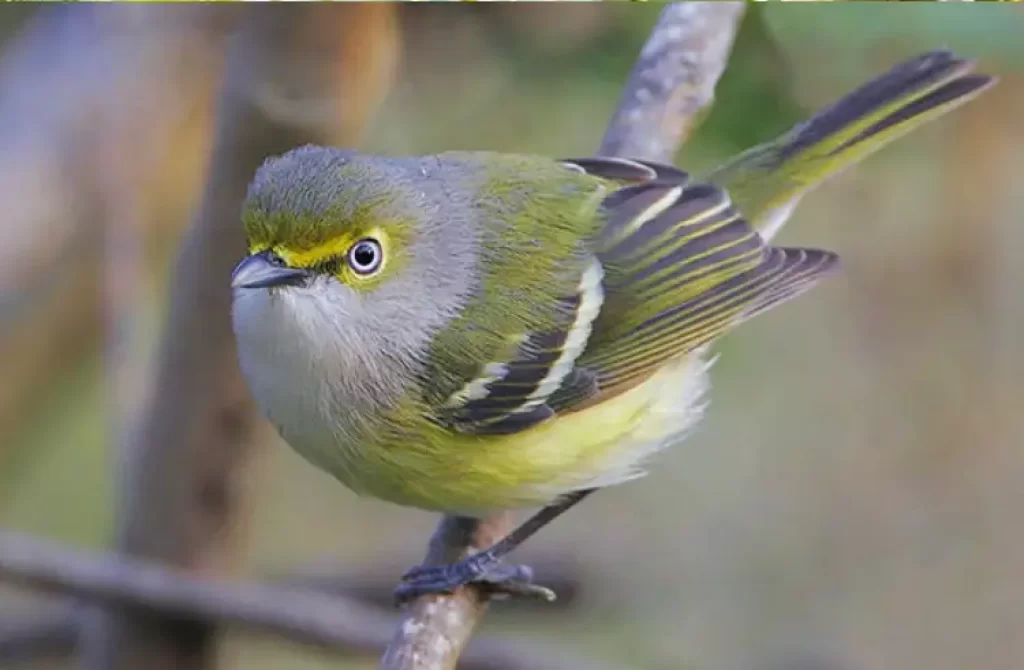
The White-eyed Vireo, scientifically known as Vireo griseus, is a small but captivating songbird that can be found in the woodlands of Tampa.
Measuring around 4.5 to 5 inches in length, these charming birds are known for their distinctive features.
White-eyed Vireos have olive-green feathers on their upperparts and a unique feature that sets them apart: striking white eyes surrounded by yellow “spectacles,” which give them an almost theatrical appearance.
But what truly makes them stand out is their cheerful and melodious songs that fill the Tampa woods.
If you’re ever out exploring nature in the area, you’re likely to hear their lively tunes, which add a beautiful soundtrack to the local ecosystem.
Painted Bunting (Passerina ciris)
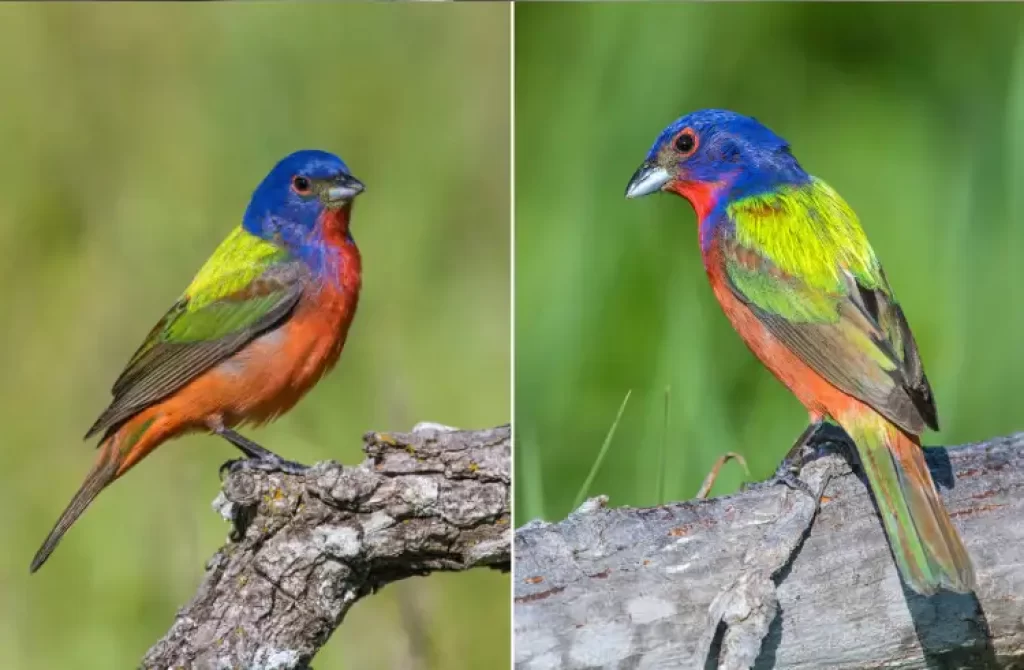
Ever heard of a bird that looks like it jumped right out of a colorful painting? That’s the Painted Bunting for you! These little guys are only about the size of your hand, roughly 5 to 5.5 inches long, but they pack a punch with their vibrant colors.
Now, here’s the thing – it’s mainly the male Painted Bunting that sports the show-stopping colors. Imagine a bird with a splash of bright blue, fiery red, and lively green.
Sounds like a flying rainbow, right? On the other hand, the ladies have their own charm. Female Painted Buntings wear a lovely shade of green-yellow.
This color not only makes them look pretty but also helps them blend in perfectly among the bushes and trees, like nature’s own stealth mode. So, whether you’re spotting the colorful male or the camouflaged female, these birds are always a treat to watch!
Green-winged Teal (Anas carolinensis)
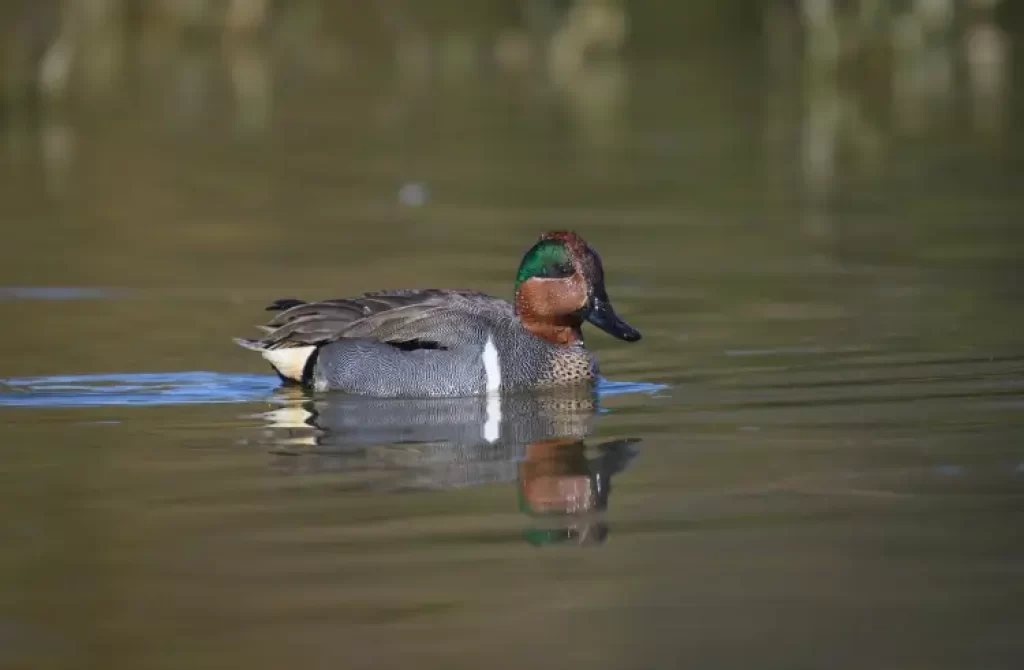
The Green-winged Teal, known as Anas carolinensis, is a neat little duck you might see around North America. They’re not big, measuring about 12 to 16 inches long, and they’re the smallest of the dabbling ducks in these parts.
Now, the males, they’re the eye-catchers in the crowd. Picture this: they’ve got this cinnamon-colored head that really stands out. Plus, there’s this cool green stripe that goes from their eyes all the way back on their head.
And, just to add to their charm, they’ve got a chest that’s all speckled chestnut. It’s like they’re dressed for a fancy party all the time.
Seeing one of these male Green-winged Teals is like spotting a little work of art in the wild. They bring a splash of color to the duck world right here in North America, reminding us of the natural beauty all around us.
Purple Gallinule (Porphyrio martinicus)
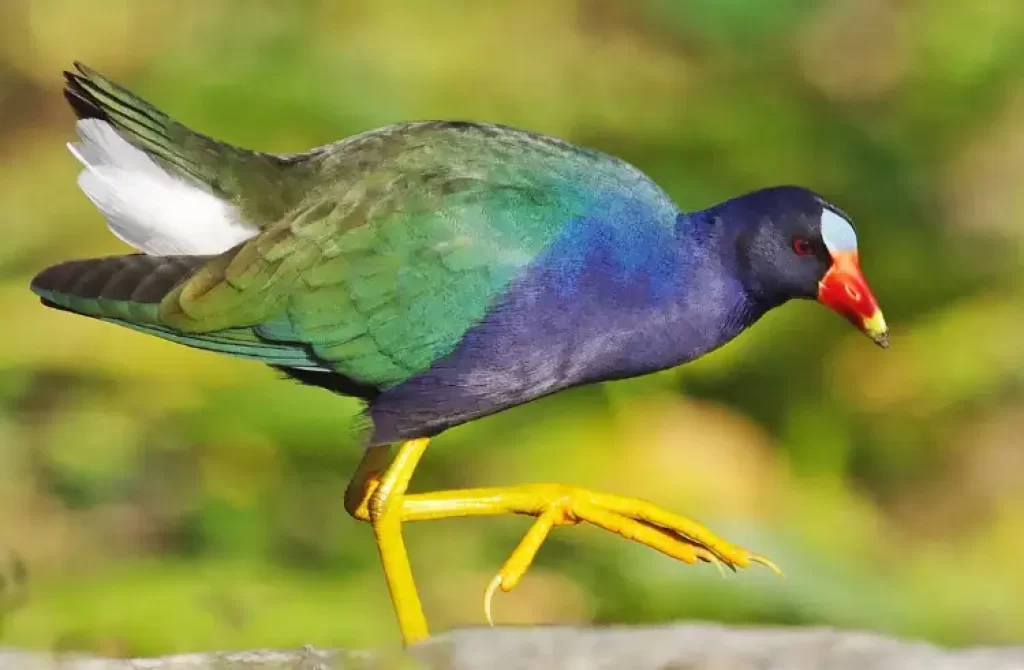
Imagine going to a bird-watching event and spotting a bird that looks like it walked straight out of a fairy tale. That’s the Purple Gallinule for you. Now, even though it’s named “purple,” it’s so much more than that.
This bird is like a walking rainbow! With a shimmering green back that sparkles in the sun, to a deep purple-blue face and neck, it’s already turning heads.
But wait, there’s more! Those bright yellow legs look like they’re made for dancing, and its flashy red beak comes with a splash of yellow at the tip.
It’s like Mother Nature had some fun designing this one. Spotting this bird is like finding a hidden gem. So, if you’re ever out and about and catch a glimpse of this colorful character, consider yourself pretty lucky. It’s one for the photo books!
Buff-bellied Hummingbird
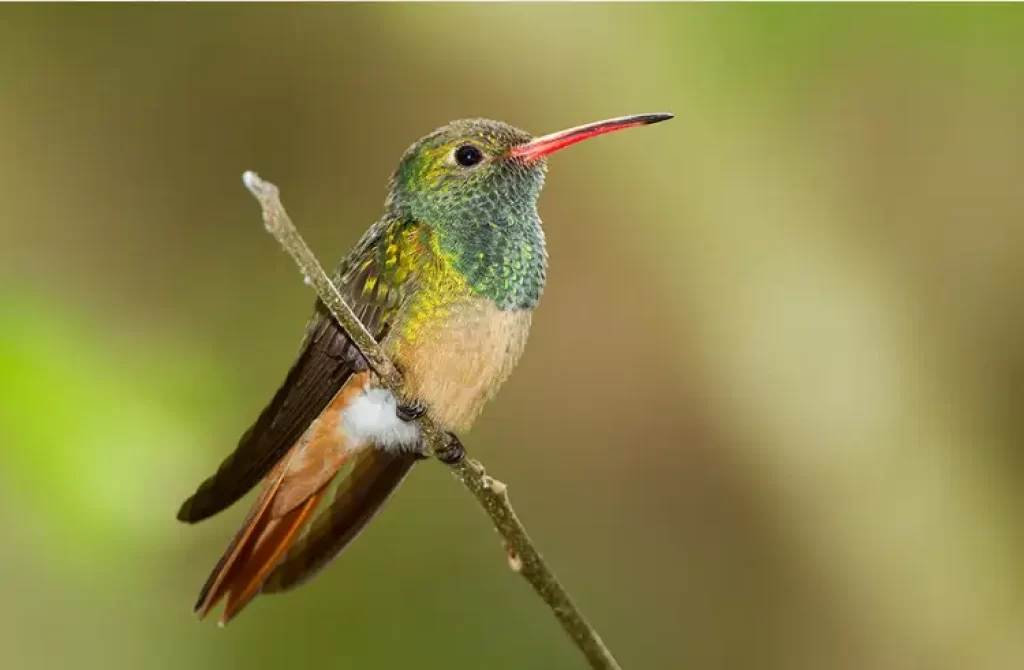
The Buff-bellied Hummingbird is a charming little bird that, although not a regular in Florida, sometimes pays a visit to the Gulf Coast region, especially around the Florida Keys.
Now, picture this bird as a tiny, colorful gem. It’s got shiny green feathers on its back that sometimes have a golden or bronze tint. What makes it stand out is its belly, which has this warm cinnamon or buff color. It’s like a little sunbeam in bird form.
These hummingbirds are known for their fancy flying skills. They zoom around in the air, sipping nectar from flowers with their long, pointy beaks.
So, if you happen to spot one of these little beauties in Florida, consider yourself lucky, because they’re not an everyday sight, but they sure bring some extra sparkle to the Sunshine State.
What is the best time of year to spot green birds in Tampa?
The best time to spot green birds in Tampa is during the spring and fall migration periods. That’s when many birds pass through Florida.
However, some green birds, like the Green Heron and Monk Parakeet, can be seen year-round. If you’re aiming to see migratory birds, though, spring (March to May) and fall (September to November) are your best bets. Plus, the cooler weather during these times makes bird-watching even more enjoyable!
Getting the Most Out of Your Bird-Watching Experience in Tampa
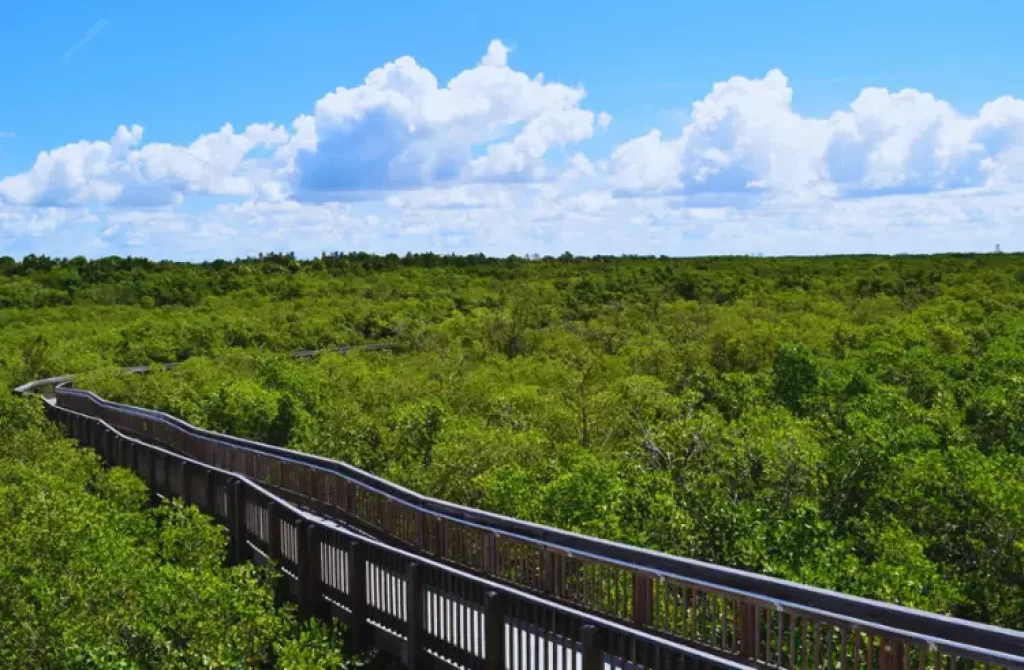
1. Timing is Your Best Friend
You ever hear the saying, “The early bird catches the worm”? Well, in bird-watching, the early riser often spots the bird!
A lot of our feathery friends are super active during the wee hours of the morning and then again when the sun’s setting.
It’s like they’re on nature’s clock or something. So, if you’re really itching to see some of those gorgeous green birds, or any bird for that matter, set that alarm and brew a cup of coffee.
Or maybe make it an evening thing and wrap up your day with some bird-watching at dusk. Either way, you’re in for a treat.
2. Gear Up, but Keep It Simple
Now, you don’t need a whole bunch of fancy gadgets to enjoy bird-watching, but trust me, a decent pair of binoculars is like magic. It’s like getting a front-row seat at a concert, but for free and in the great outdoors.
With those binoculars, you’ll see the tiniest details – like the shimmer on a bird’s feathers or the twinkle in its eye. And if you can, grab a bird guidebook for Tampa. It’ll help you figure out who’s who in the bird world.
3. Patience is More Than Just a Virtue Here
Let’s be real, folks. Birds aren’t just gonna line up and wait for you to admire them. Sometimes, you might be out there for a while and think, “Where are all the birds at?” But hey, that’s all part of the experience. Think of it like fishing – you’re there for the thrill, the waiting, the wondering.
Bird-watching is just as much about soaking in the fresh air, listening to the rustling leaves, and feeling one with nature as it is about spotting birds.
So, kick back, relax, and let nature come to you. When you least expect it, you might just spot that one bird that makes your day.
Bird-watching in Tampa isn’t just a pastime; it’s an adventure. With the right timing, some basic gear, and a dash of patience, you’re all set to connect with nature and discover the beauty it has to offer.
Wrapping Up…
Tampa, Florida isn’t just about sunny beaches and fun city stuff. It’s also a great spot for folks who love birds, especially the green ones. If you’re into bird-watching or just curious about the birds around town, Tampa’s got some cool ones to see. Want to learn more? Check out the article below. Come see what all the buzz is about!
FAQs
What are the green birds in St Pete, Florida?
St. Pete, Florida, like its neighbor Tampa, is home to several green birds. Some of the popular ones you might spot include the Monk Parakeet, Green Heron, and the White-eyed Vireo. If you’re hanging around parks or near the water, keep an eye out. They’re a real treat to see and show how diverse our local bird life is. Happy bird-watching!
Are green parrots wild in Florida?
Yep! Green parrots, especially the Monk Parakeet (sometimes called Quaker Parrot), are indeed found in the wild in Florida. They’re not native to the state, but over time, some pet parrots got loose and established wild populations.
Now, you can often spot them in urban areas, parks, and neighborhoods, especially in South Florida. They’re pretty cool to see flying around!
Where do green birds in Tampa nest?
Green birds in Tampa find all sorts of places to nest. Monk Parakeets often build big nests out of sticks in trees or even on power poles. Green Herons like to nest in tall trees near water.
Other green birds might pick bushes, tree branches, or marshy areas. Basically, these birds find cozy spots around the city, parks, and watersides to set up their homes. Pretty neat, right?
Kenno Marques is a self-taught English speaker deeply passionate about nature and wildlife. He dedicates his time to scouring the web for the latest animal news and engaging content, which he shares on various websites. Fluent in three languages, Kenno is currently on a journey to master German. His commitment to fostering an understanding of the natural world makes him a valuable contributor to the online community.





